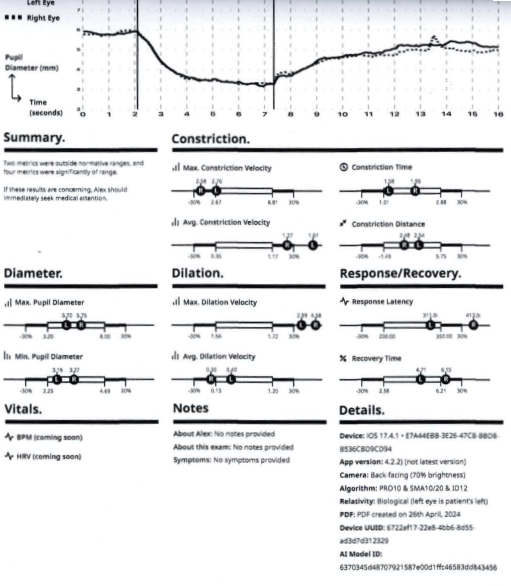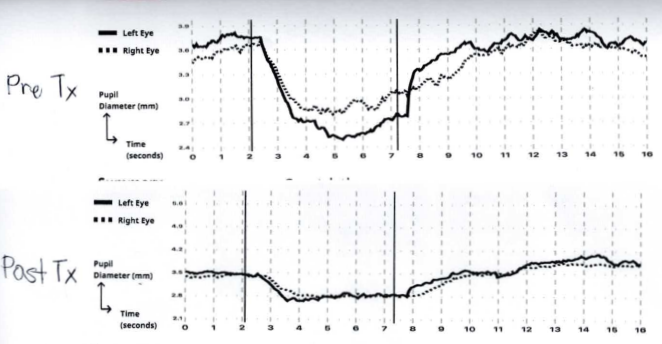Pupillometry Explanation
Pupillometry is the measurement of the pupil diameter and reactivity (changes in pupil size). It is conducted using a Pupillometer being a device that measures the size of the pupil and its reactions to various stimuli.
Pupillometry provides insights into a variety of physiological, psychological, and neurological states and is considered an accurate indicator of Autonomic Nervous System function.
We use ‘Ocula’ which measures both eyes simultaneously. We have been a significant contributor to the development of this technology.
This method of testing is quick, easy and accurate. Which makes it lend itself to repeatedly monitoring progress, especially of the symptoms pertaining to the Autonomic Nervous System.
Pupillometry helps in diagnosing and monitoring neurological disorders, such as brain injuries, cerebral diseases, and other conditions that affect the nervous system.
The primary measurements include pupil size (diameter), reaction time to light (how quickly the pupil constricts in response to light and dilates again in its absence), and the rates of these changes.
Digital pupillometry provides objective data that can complement other diagnostic procedures.
Below is a typical graphical representation of the report the application generates and beneath that is just the graphical part of reports before and after treatment of a patient that presented with Post Concussion Syndrome.


